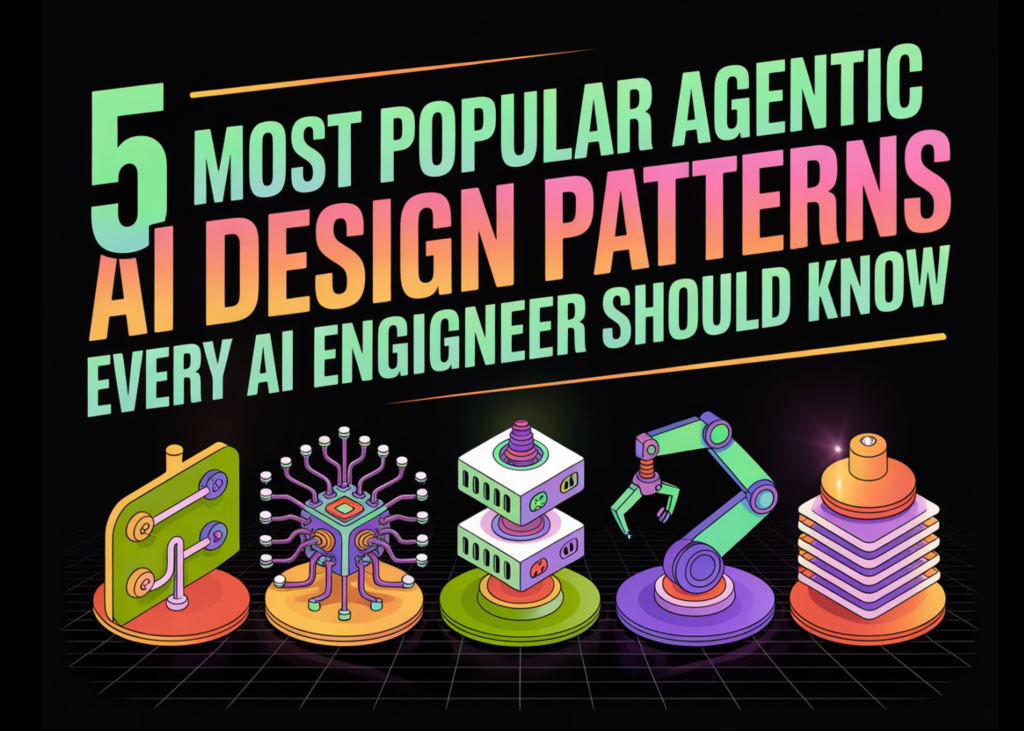
Exploring the Top 5 Agentic AI Design Patterns for Modern Engineers
As artificial intelligence (AI) continues to evolve beyond the capabilities of simple chatbots, new design patterns have emerged that significantly enhance their functionality. These agentic design patterns are essential for AI engineers aiming to create more capable, adaptable, and intelligent systems. They define how AI agents think, act, and collaborate to solve complex problems in real-world environments.
In this article, we explore five of the most popular agentic design patterns that every AI engineer should be familiar with:
1. ReAct Agent
The ReAct agent is based on the "reasoning and acting" (ReAct) framework. This design pattern allows agents to utilize external tools while combining step-by-step thinking. Unlike traditional systems that follow rigid rules, ReAct agents reason through problems, take actions such as searching or executing code, and then observe the results to inform their next steps.
For instance, consider planning a meal: you start by assessing what ingredients you have at home (reasoning), then check your fridge (action). If you discover only vegetables (observation), you adjust your plan and decide to prepare pasta with those vegetables. This iterative process mimics human problem-solving and is fundamental to the ReAct design pattern.
2. Memory-Augmented Agents
Memory-augmented agents leverage external memory to enhance their problem-solving capabilities. These agents can store and retrieve information, allowing them to maintain context over long interactions, which is crucial for tasks that require continuity, such as customer service or personal assistants.
3. Multi-Agent Collaboration
This design pattern involves multiple AI agents collaborating to tackle complex tasks. By distributing the workload, these agents can solve problems more efficiently and effectively. This approach is particularly useful in scenarios like automated trading or logistics, where coordination between agents can lead to better outcomes.
4. Self-Reflective Agents
Self-reflective agents are designed to analyze their own actions and outputs. This capability allows them to learn from past experiences and improve their performance over time. Such agents can identify mistakes or inefficiencies and make necessary adjustments, thereby enhancing their overall effectiveness.
5. Tool-Using Agents
Tool-using agents are capable of integrating and utilizing external applications and APIs to augment their functionality. This design pattern enables agents to perform a wider range of tasks, from gathering information to executing complex commands, making them versatile tools in various domains.
Understanding these agentic AI design patterns is crucial for engineers aiming to build smarter, more autonomous systems. As the landscape of artificial intelligence continues to evolve, familiarizing oneself with these concepts will be essential for staying ahead in the field.
Rocket Commentary
The article presents a promising outlook on the evolution of AI with the introduction of agentic design patterns like the ReAct agent. This shift toward more adaptable and intelligent systems is not just a technical advancement; it represents a pivotal moment for businesses aiming to integrate AI into their operations. However, while the potential for enhanced functionality is clear, we must remain vigilant about the ethical implications of these technologies. Ensuring accessibility and transparency in AI design is crucial, as it will empower users and foster trust. As we embrace these innovations, we must prioritize building AI systems that are not only powerful but also aligned with ethical standards to truly transform industries for the better.
Read the Original Article
This summary was created from the original article. Click below to read the full story from the source.
Read Original Article